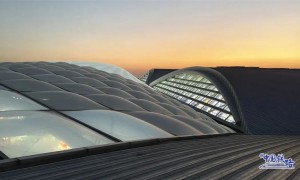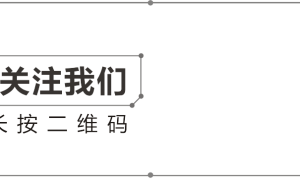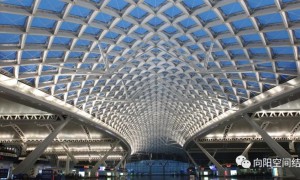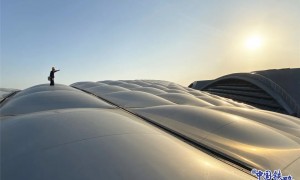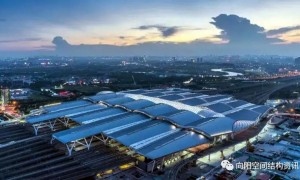用专业的眼光传播价值。
问:冷弯薄壁型钢墙体和其它墙体比起来,最大的区别是什么?
答:中间是空的。
问:中间是空的有什么好处?
答:方便在里面布置各种各样的管线。
问:哪里的管线多到其余的墙体都干不了?
答:病房,床头那堵墙!
以下图片是美国某公司,承接的部分医疗项目隔墙应用案例。
通过在工厂进行预组装,将没有技术含量的轻钢龙骨隔墙深加工,预装医疗设备管线如氧气管、紧急呼呼系统等。
这种做法有什么好处?做过招投标的小伙伴一定很清楚,如果按照“轻质隔墙”清单项,价格肯定上不去,审计也过不了。那么可否换个清单项目?改为“医疗设备”,这样清单价格就可以做的很高,审计也审不出来……(本段纯属异想天开,请勿对号入座)
补充视频
轻钢龙骨隔墙在国内应用已有些年头了。
1982年,以北京长城饭店使用“龙”牌石膏板为标志,新型墙体材料开始大规模使用。
北新建材石膏板墙体吊顶系统是由石膏板、轻钢龙骨、系统配套材料等构成的绿色建筑系统解决方案。自主研发的建筑体系包括吊顶系统、直卡式龙骨系统、隔墙系统、贴面墙系统、井道墙系统等,可全面应用于各大工程及家庭装修。
龙牌轻钢龙骨:主要有吊顶龙骨和隔墙龙骨两大类。吊顶龙骨包括UC龙骨系列、V型直卡式龙卡骨系列及直卡式造型龙骨系列等。隔墙龙骨包括UC普通龙骨系列、独家开发的CH型、E型和不等边型井道墙龙骨系列、Z型减震隔声龙骨系列等。产品规格齐全,超过600个品种,并可根据客户需要定制特殊规格的产品。
具有特点:先进的无应力系统、卓越的耐腐蚀性能、高标准的断面尺寸、高效的定尺加工服务、良好的施工性能。
长久以来,国内不管是土建还是装修,都没有预制的概念,原因是多方面的。既有城乡二元户籍管理原因,也有人力资源成本相对较低的原因,也有施工精度低,管理粗放的原因。但是不管原来如何,今后的方向一定是预制为主。需要从技术和观念上同时转变。这种在欧美发达国家流行的“干墙”(dry wall)工法,会越来越成为主流隔墙方案。
Cold-formed steel is widely used in buildings, automobiles, equipment, home and office furniture, utility poles, storage racks, grain bins, highway products, drainage facilities, and bridges. Its popularity can be attributed to ease of mass production and prefabrication, uniform quality, lightweight designs, economy in transportation and handling, and quick and simple erection or installation.
冷弯型钢广泛应用于建筑、汽车、设备、家庭办公家具、电线杆、仓储货架、粮仓、公路产品、排水设施、桥梁等。它的普及可以归因于易于大规模生产和预制,统一的质量,轻量化的设计,运输和装卸的经济,快速和简单的组合或安装。
In building construction, cold-formed steel products can be classified into three categories: members, panels, and prefabricated assemblies. Typical cold-formed steel members such as studs, track, purlins, girts and angles are mainly used for carrying loads while panels and decks constitute useful surfaces such as floors, roofs and walls, in addition to resisting in-plane and out-of-plane surface loads. Prefabricated cold-formed steel assemblies include roof trusses, panelized walls or floors, and other prefabricated structural assemblies. Cold-formed steel possesses a significant market share because of its advantages over other construction materials and the industry-wide support provided by various organizations that promote cold-formed steel research and products, including codes and standards development that is spearheaded by the American Iron and Steel Institute (AISI).
在建筑施工中,冷弯型钢产品可以分为三类:构件、面板和预制组件。典型的冷弯型钢构件,如螺柱、轨道、檩条、梁和角钢主要用于承载荷载,而面板和甲板构成有用的表面,如地板、屋顶和墙壁,除了抵抗平面内和平面外的表面荷载。预制冷弯型钢组件包括屋顶桁架、镶板墙或地板,以及其他预制结构组件。由于冷弯型钢相对于其他建筑材料的优势,以及由促进冷弯型钢研究和产品的各种组织提供的全行业支持,包括由美国钢铁协会(AISI)牵头的规范和标准开发,冷弯型钢占有重要的市场份额。
Cold-formed steel applications can be traced back as early as the 1850s in both the United States and Great Britain. In the late 1920s and early 1930s, cold formed steel entered the building construction arena with products manufactured by a handful of fabricators. Although these products were successful in performance, they faced difficulties with acceptance for two reasons: (1) there was no standard design methodology available, and (2) cold-formed steel was not included in the building codes at that time. Many of the cold-formed steel applications were unable to be used due to the lack of design methodology and product recognition.
在美国和英国,冷弯型钢的应用可以追溯到19世纪50年代。在20世纪20年代末和30年代初,冷弯型钢进入了建筑建筑领域,其产品由少数制造商生产。尽管这些产品在性能上是成功的,但由于两个原因,它们面临着难以接受的困难:(1)没有可用的标准设计方法,(2)当时冷弯型钢没有包括在建筑规范中。由于缺乏设计方法和产品认可,许多冷弯型钢应用程序无法使用。
Cold-formed steel products are shaped at ambient temperatures from steel sheet, strip plate or flat bars by roll-forming machines, press brakes or bending brake operations. They can be produced in large quantity and at high speed with consistent quality. A typical automated rolling machine can run at a speed range of 75-400 feet per minute, and the products can be as small as a three-quarter inch wide cold-rolled channel section to as big as a thirty-six inch wide roof deck section.
冷弯型钢产品是在环境温度下由钢板、带材或扁钢通过滚压成型机、压闸机或弯闸机操作成型的。它们可以大批量、高速度、高质量地生产。一台典型的自动卷板机可以以每分钟75-400英尺的速度运行,产品可以小到3 / 4英寸宽的冷轧槽段,大到36英寸宽的屋顶甲板段。



